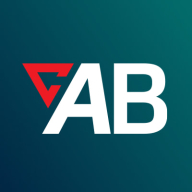

We performed a comparison between ActiveBatch Workload Automation and IBM Workload Automation based on our users’ reviews in five categories. After reading all of the collected data, you can find our conclusion below.
Features: ActiveBatch Workload Automation provides a wide range of valuable features such as versatility, ease of use, prebuilt jobs, real-time scheduling and monitoring, intelligent automation, scalability, REST API adapters, and an exceptional user interface. IBM Workload Automation prioritizes client voting for additional features, triggering jobs in multiple nodes, and batch application tracking.
ActiveBatch Workload Automation has areas that could be improved, such as licensing, user interface, trigger reliability, monitoring dashboard, documentation, support services, and integration capabilities. IBM Workload Automation has faced performance problems in past versions, difficulties with navigation, and limited reporting visibility.
Service and Support: ActiveBatch Workload Automation has been praised for its excellent customer service, particularly its reliable technical support. However, there are concerns about the service model and the availability of the hotline. IBM Workload Automation is highly respected for its support, with customers recommending its lab advocacy program for detailed code support.
Ease of Deployment: The setup process for ActiveBatch Workload Automation is straightforward and uncomplicated, without any significant challenges. However, there is a minor requirement for additional documentation during the file import. The initial setup for IBM Workload Automation can be difficult for individuals who are not familiar with IBM tools, however, with help, it becomes relatively easy.
Pricing: ActiveBatch Workload Automation offers a versatile licensing structure that eliminates the need for agents on all servers, whereas IBM Workload Automation's cost is based on the customer's agreement.
ROI: ActiveBatch Workload Automation has received positive feedback for its ability to generate positive results and financial benefits. Users have reported a significant increase in net revenue. There is a lack of specific user reviews and ROI data for IBM Workload Automation. However, it is known for its focus on optimizing workload management processes and enhancing efficiency.
Comparison Results: ActiveBatch Workload Automation is highly recommended over IBM Workload Automation. Users appreciate ActiveBatch's straightforward setup process, adaptability, ease of use, ready-made jobs, intuitive interface, real-time monitoring, scalability, and an extensive collection of prebuilt job steps.
| Product | Market Share (%) |
|---|---|
| IBM Workload Automation | 6.0% |
| ActiveBatch by Redwood | 2.8% |
| Other | 91.2% |


| Company Size | Count |
|---|---|
| Small Business | 10 |
| Midsize Enterprise | 13 |
| Large Enterprise | 46 |
| Company Size | Count |
|---|---|
| Small Business | 4 |
| Midsize Enterprise | 1 |
| Large Enterprise | 29 |
ActiveBatch by Redwood enhances efficiency with features like job scheduling, integration, and real-time monitoring. It supports diverse platforms, automates tasks, and offers a single-pane view with robust security.
ActiveBatch streamlines automation by offering drag-and-drop functionality, pre-built job steps, and native integrations. Its customizable workflows and alert system aid in managing complex workloads like data processing and server monitoring across hybrid environments. While it effectively reduces manual errors and enhances productivity, areas like navigation and support for cloud platforms need enhancement. New users may face challenges due to its complexity and steep learning curve, and further improvements in reporting, mobile access, and training could provide additional support to users.
What important features does ActiveBatch offer?In finance, ActiveBatch is implemented for orchestrating batch processes and data management. The healthcare industry utilizes it for automating patient data updates and server monitoring, while the retail sector benefits from file transfers and inventory management automation.
IBM Workload Automation streamlines scheduling with automation and dynamic workload balancing. It integrates multiple platforms, offering efficient management across diverse systems, enhancing operational productivity.
IBM Workload Automation provides end-to-end control in managing tasks across varied platforms, supporting event-based scheduling and real-time updates. Its intuitive GUI allows seamless scripting and monitoring, facilitating integration with applications like SAP and Oracle. The inclusion of FTA agents ensures efficient local dependency management, while offering versatile scheduling options. Its capability to provide a comprehensive view, manage CPU usage, and meet service level agreements positions it as a valuable tool for large-scale operations.
What are the most important features?Industries such as government, banking, and large enterprises implement IBM Workload Automation for automated scheduling, workload balancing, and batch processing. It assists in migrating from legacy systems to web-based services, integrating with numerous applications, and managing extensive daily job lists. Key functions include offshore management and backend data collection, crucial for effective resource tracking. This adaptability enables organizations to efficiently support operations while scaling workloads as needed.
We monitor all Workload Automation reviews to prevent fraudulent reviews and keep review quality high. We do not post reviews by company employees or direct competitors. We validate each review for authenticity via cross-reference with LinkedIn, and personal follow-up with the reviewer when necessary.